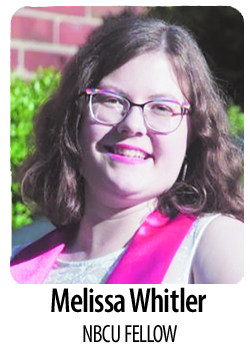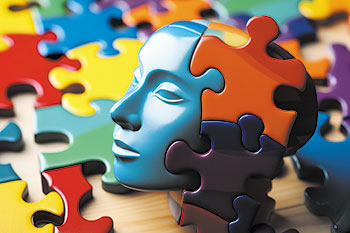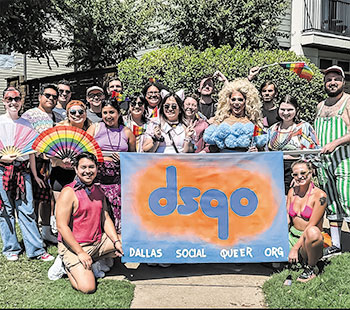There is a lot more to making Pride accessible to everyone than handicapped parking and restrooms
 Pride Month is a time to bring everyone in our community together and celebrate — like the Dallas Pride theme for 2024 says: Unity in the Community. But for many, Pride events can still feel exclusionary.
Pride Month is a time to bring everyone in our community together and celebrate — like the Dallas Pride theme for 2024 says: Unity in the Community. But for many, Pride events can still feel exclusionary.
For those with certain disabilities or sensory issues, large festivals like Dallas Pride are inaccessible. There are many barriers that can arise for disabled people, including at the information level.
Fair Park boasts handicapped accessible parking, yet it is only labeled on one parking lot out of 15. Its website has a list of ADA-accessible areas inside the park, yet this is nowhere to be found on their accessibility page.
Navigating these kind of events is already hard enough for those with physical disabilities, but without access to information, it is impossible. While there are accessible restrooms throughout the park, there is no map online to help navigate. The Dallas Pride website (DallasPride.org) offers no additional help, saying they include more information but just linking to Google Maps with the promise of “maps and more information coming soon.”
Allison Martin, local disability advocate, recalled how the last two years of Dallas Pride have proven a challenge just to participate in.
“I’m really grateful that these events are happening,” said Martin, “but it feels like it wasn’t put together with people like me in mind.”
Difficulty began when she first arrived at Fair Park, as it was hard finding accessible parking. That meant she had to walk a significant distance just to get to the festival.
 “As someone with POTS [postural orthostatic tachycardia syndrome], I’m really sensitive to heat, and get dizzy and low blood pressure. Having to walk and stand for extended periods of time is really hard on my body,” Martin explained. While there were some spaces inside which helped with the heat, there was still a lack of seating, which added to her exhaustion.
“As someone with POTS [postural orthostatic tachycardia syndrome], I’m really sensitive to heat, and get dizzy and low blood pressure. Having to walk and stand for extended periods of time is really hard on my body,” Martin explained. While there were some spaces inside which helped with the heat, there was still a lack of seating, which added to her exhaustion.
So lack of consideration given to accessibility makes it harder for people like Martin to participate in Pride.
There are some accommodations that have been arranged this year, as Saturday’s festival will have several picnic tables for use around the festival grounds, and some limited seating will be available near the Centennial Stage. But it is easy to imagine these filling up quickly, considering the amount of people who attend. Sunday’s parade will have designated handicap viewing areas reserved for attendees with wheelchairs, mobility scooters and similar devices setup at three locations along the Parade route. That provides more accommodations — but only for those with a visible disability.
One of these locations will include an ASL interpreter. The parade will be broadcast on CW33, so it is possible for people to enjoy it without having to physically go.
With the theme of Unity in the Community, one would hope for more consideration for those of the community who are not neurotypical or able bodied. This is an important concern for our community, as new research shows LGBTQ people are more likely to have a disability than the general population.
But how do we create events that are truly open to everyone? It takes envisioning a new way of doing things. Many of our “traditional” events feature loud noise levels and flashing lights, which can cause sensory overload even for those not as sensitive. For already marginalized groups, their needs are often forgotten in the planning stages of such events.
For example, how are we accommodating trans and gender non-conforming folks? For those chest binding, the heat and exertion are especially hard and can come with increased risk. What would a Pride parade look like with more tents and shaded areas for those watching?
With the number of buildings at Fair Park, why not dedicate one as a sensory area, where there is quiet and lots of seating. Many places still only have male and female separated bathrooms, posing another safety risk for trans people. Can certain restrooms at Fair Park be labeled as gender neutral and well-marked on maps for Pride?
Inclusivity does not always take big, sweeping changes — just considering things from different perspectives.

Accessibility for everyone is a core concern for DSQO
One local organization making strides in accessibility is the Dallas Social Queer Organization, aka DSQO. While still relatively new, the founders hosted a visioning session before it was created to make sure they were meeting the needs of the community. This led to the creation of three levels of leadership: DSQO team, which is open to anyone who wants to give any amount of their time; development team, comprising nine people and no more than 50 percent cis or white; and the three executive coordinators who help carry out the will of the teams and delegate work.
Javier Enriquez, one of the three executive coordinators, talked about how their group, and others, can work toward being inclusive for all.
“The goal of DSQO is to bring together the whole LGBTQ community,” Enriquez said. “We want as many people to feel comfortable and able to participate in our spaces as possible.”
This includes people from the whole spectrum of sexual and gender identities, as well as disability status and accessibility needs.
One of the most basic steps DSQO has taken is to share specific accessibility information about each of their events. “At the beginning we weren’t as active in recognizing accessibility needs,” Enriquez explained. “One person started asking for these accommodations and it sparked a larger conversation with the development team.” Now the organization makes sure to include alt text on all their social media posts for those with vision difficulties and includes information about wheelchair accessibility and other concerns.
“It’s important to share this information so that people can make the decision for themselves if they want to attend,” Enriquez said.
In addition, DSQO offers masks, ear plugs and a stimulation/sensory bin at all their events, and dedicated smoking areas and spaces away from flashing lights and loud music. They also offer virtual components to as many events as possible and have many members who attend exclusively remotely.
“We can’t make all spaces accessible all the time,” Enriquez said. “But just because we can’t do everything doesn’t mean we should do nothing.”
Inclusivity must be intentional and can’t be done overnight. It takes actively listening to people, pushing against unconscious biases, and deliberate actions. It might also take a reorganization of leadership. Ensure you have a diverse group organizing events. Disabled people should not just be included in events, but be present in leadership.
Another consideration is where events happen. Many of the Pride festivities take place at bars and clubs, limiting attendance to 21 and up. While the Dallas Pride Festival and Parade are open to everyone regardless of age (including Teen Pride and Family Pride Zone), many of the other scheduled events are only for those 21 and older. Even for those who are old enough to legally drink, there are many reasons why someone might not feel comfortable at an event surrounded by alcohol.
So how can we reimagine events outside of bars?
This is why DSQO has a commitment to make the majority of their events sober and only hosts a max of two events a month with alcohol. The organization also has a system of “DSQO parents,” who remain sober for these events and specifically look out for everyone. This way attendees are safe and able to get home.
The core of accessibility and accommodations is inclusion. Enriquez recalled how one of their members was able to attend their first-ever house party because of DSQO’s inclusivity.
“One of our attendees is semi wheelchair bound, and expressed how big the DSQO community has been for them,” Enriquez remembered. They had never been able to be a part of queer spaces before and showed a lot of appreciation for the accommodations.
This is how we show unity in our community, by committing to inclusivity and compassion. There are many online resources about how to make events more accessible. When celebrating Pride, we must ensure dignity and inclusion for all.


